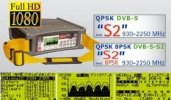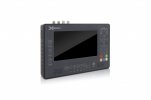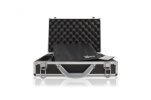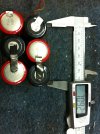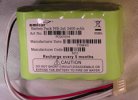what about this,regards mdt
£375
Satellite Tuner:
Tuner Type: DVB-S / S2
Input Connector: F-Type (Female)
Loop Through: F-Type (Female)
Frequency Range: 950MHz ~ 2150MHz
Signal Level: -65 to -25dBm
LNB Power & Polarizations: Vertical: +t13V / +13.5V, Horizontal: +18V / +18.5V
Current: 300mA, Overload Protection
22KHz Tone: Frequency: 22±1 KHz
DiSEqC Control: Version 1.0, 1.1, 1.2, USALS (Amplitude: 0.6±0.2V)
Demodulation: QPSK, 8PSK
Input Symbol Rate: 2-45Mbps, Convolution Code Rate
FEC: 1/2, 2/3, 3/4, 5/6, 7/8, 1/4, 1/3, 2/5, 3/5, 4/5, 8/9, 9/10 and Auto
Terrestrial Tuner:
Tuner type: DVB-T / DVB-T2
Input Connector: IEC-Type (Female)
Loop Through: IEC-Type (Male)
Signal Level: Nordig Compliant, DBOOK Compliant
DVB-T FEC: Viterbi + Reed Solomon 1/2, 2/3, 3/4, 5/6, 7/8
DVB-T2 FEC: LPDC + BCH 1/2, 3/5, 2/3, 3/4, 5/6
Input Frequency: 47 ~ 862MHz
Constellation: QPSK, 16QAM, 64QAM, 256QAM
Guard Interval: 1/4, 19/256, 1/8, 19/128, 1/16, 1/32, 1/128
FFT Mode: 1k, 2k, 4k, 8k, 16k, 32k normal and extended
Channel Bandwidth: 6 / 7 / 8 MHz
Antenna Power Output: 5V (50mA max.)
Demodulation: COFDM 2K/8K
Number of Carriers: 1705 / 6817
Cable Tuner:
Tuner type: DVB-C
Input Connector: IEC-Type (Female)
Loop Through: IEC-Type (Male)
Frequency Range: 47 ~ 862 MHz
Signal Level: -20dBmV ~ +20dBmV
Bandwidth: 7 / 8MHz
Demodulation: 64 / 128 / 256 QAM
Input Symbol Rate: 1.5 ~ 7 Ms/s System Resources:
Main Processor: 400MHz
Flash Memory: 8Mb
DDR SDRAM: 128Mb
Internal Storage: 2Gb (FAT16)
Power Supply:
Input Voltage: 14.5V DC (4A)
Battery: 11.1V (5.5Ah)
Battery Charging Time: ~3.5 Hours
Battery Discharging Time: ~6-7 Hours
MPEG TS A/V Decoding:
Transport Stream: MPEG-2, H.264
Input Rate: Max. 120Mbit/s
Aspect Ratio: 4:3, 16:9
Video Decoding: MPEG-2, MP@ML, MPEG-4 Part 10 / H.264
Video Resolution: 720x480p/i, 720x576p/i, 1280x720p, 1920x1080p/i
Audio Decoding: MPEG-1 layer I/II, MPEG2 layer II, Dolby Digital, Dolby Digital Plus
Audio Mode: Left / Right / Stereo / Mono
Sampling Rate: 32, 44.1 and 48KHz
A/V & Data Input / Output:
A/V In/Out: CVBS Video Input / Output, Audio L/R Input / Output
HDMI: Ver1.3 (Type A)
USB Host: Type-A (High Speed USB2.0) slot
USB Slave: Mini USB (Type-B)
Ethernet: RJ45 (10/100M)
RS-232C: 3.5mm Jack Type (Transfer Rate: 115.2Kbps)
Physical Specifications:
LED Display: 7 inch
Size (WxHxD): 242mm x 160mm x 46mm
Net Weight: <2Kg
Operation Temperature: 0ºC ~ 45ºC
Storage Temperature: -10ºC ~ 70ºC
Storage Humidity: 5% ~ 95% RH (Non-Condensing)

